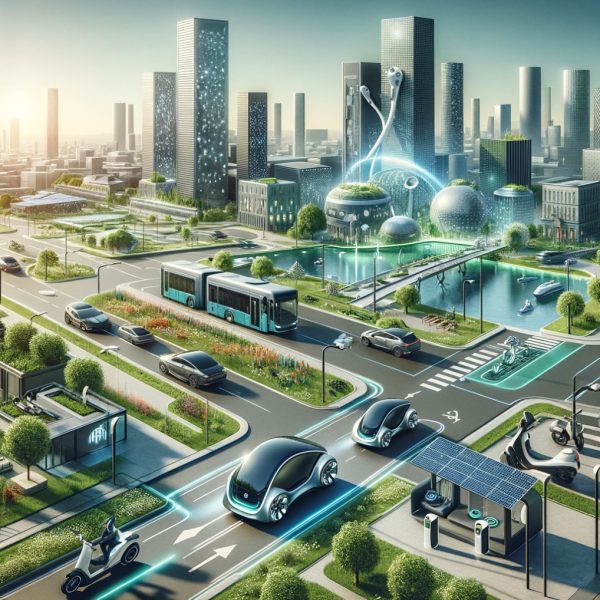Ather Energy vs Ola Electric vs Hero Electric vs Simple Energy vs TVS vs Bajaj vs Honda e:Activa (2025)
August 26, 2025
Industry: Electric Vehicle
Subject: Startups

In 2025, TVS and Bajaj lead monthly EV scooter sales; Ather improves unit economics with the family‑focused Rizta; Ola scales batteries but faces share loss; Hero Electric resets after subsidy shocks; Simple Energy expands retail; and Honda e:Activa enters with a mainstream value play.
1) Market Snapshot: EV Scooters Go Mainstream
India’s electric two‑wheeler market has matured from subsidy‑led experimentation to scale. Monthly volumes are increasingly dominated by incumbents with deep distribution, while new‑age startups compete on software, design, and fast innovation. Penetration is highest in scooters, where use‑cases—short commutes, food delivery, and errands—fit electric economics. Consumer priorities in 2025: reliability, service access, total cost of ownership (TCO), battery warranty, and resale value.
Key shifts in 2025:
- Leadership rotation in monthly sales between TVS iQube and Bajaj Chetak; both have widened retail and service networks.
- Ather narrows losses and grows volumes on the back of Rizta and a stronger accessories/software mix.
- Ola Electric remains a scale player but cedes share amid intensified competition and service expectations.
- Hero Electric works through a reset, rebuilding momentum and channel confidence.
- Simple Energy moves from early delivery hiccups toward network build‑out and model rationalization.
- Honda re‑enters decisively with e:Activa, leveraging the Activa brand and an enormous ICE‑era dealer base.
2) Company Overviews & 2025 Highlights
Ather Energy
- Positioning: Premium‑tech brand focused on ride quality, UI/UX, and reliability.
- 2025 highlights: Volumes nearly doubled YoY; family‑centric Rizta adds mass‑market reach; software services and accessories aid gross margin.
- Economics: Losses reduce meaningfully as scale, localization, and software monetization offset pricing pressure.
- Moat: Mature OS, superior riding dynamics, robust fast‑charging footprint relative to startups.
Ola Electric
- Positioning: Broad S1 range and aggressive pricing; in‑house cell ambitions (“Bharat” cell) to improve cost curve.
- 2025 highlights: Revenue softness and share loss vs legacy peers; pushes multiple variants and bikes while expanding service.
- Economics: High capex and marketing intensity; profitability depends on battery self‑reliance and service NPS.
- Moat: Scale, brand recall, product velocity; must translate into sustained quality and after‑sales.
TVS Motor (iQube)
- Positioning: Legacy OEM quality, dependable build, nationwide service, and finance options.
- 2025 highlights: Repeated months at #1 in EV scooter sales; iQube refreshes improve range and practicality; strong city penetration.
- Economics: Balanced—driven by parts commonality, vendor leverage, and disciplined retail.
- Moat: Manufacturing depth, channel trust, wide service cover, and proven ICE‑to‑EV transition capabilities.
Bajaj Auto (Chetak)
- Positioning: Heritage‑led premium practicality; robust metal body and refined dynamics.
- 2025 highlights: Record quarter and month; Chetak repeatedly tops charts; new variants expand price ladder.
- Economics: Scale benefits, tight cost control, and halo effect from ICE portfolio.
- Moat: Strong brand, export prospects, and sturdy product appeal.
Hero Electric
- Positioning: Value‑focused EV pioneer with deep brand recall in smaller cities.
- 2025 highlights: Recalibration after policy/subsidy disruptions; renewed focus on compliant models, spares, and reliability.
- Economics: Improving inventories and channel terms; needs product refresh cadence to regain share.
- Moat: Nationwide reach and affordability if execution stays consistent.
Simple Energy
- Positioning: Performance‑first startup moving to mainstream usability.
- 2025 highlights: Store and service expansion; targets meaningful revenue scale through FY26; aims EBITDA profitability before IPO timeline.
- Economics: Still scaling; success hinges on quality control, delivery cadence, and after‑sales throughput.
- Moat: Aerodynamic design, claimed range leadership in select trims; must back with reliability and support.
Honda e:Activa
- Positioning: Mass‑market, trust‑led entry leveraging the iconic Activa franchise.
- 2025 highlights: Deliveries begin with two variants; claimed real‑world range around the 100‑km mark class and practical features. Initial rollout in major metros before wider expansion.
- Economics: Leans on Honda’s vendor base and dealership muscle; focus on durability and ownership value.
- Moat: Unmatched brand equity in scooters and enormous service network.
3) Product & Spec Snapshot (representative trims)
| Brand / Model Family | Typical Price Band (ex‑showroom) | Claimed / Practical Range | Top Speed | Notable Features |
|---|---|---|---|---|
| Ather 450X / Rizta | Mid‑premium | 110–150 km / ~90–120 km | 90+ km/h | Sharp dynamics, polished UI, app ecosystem, fast‑charging support |
| Ola S1 (X / Pro) | Entry‑to‑mid | 110–180 km / ~90–130 km | 90–115 km/h | Multiple variants, feature‑rich OS, large boot, frequent OTA |
| TVS iQube | Mid | 100–140 km / ~85–110 km | ~82–90 km/h | Solid build, wide service net, practical ride and storage |
| Bajaj Chetak | Mid‑premium | 95–127 km / ~85–105 km | ~73–85 km/h | Metal body, premium fit/finish, refined ride |
| Hero Electric (new gen) | Value | 80–120 km / ~70–95 km | ~60–75 km/h | Affordable, simple, improving compliance and quality |
| Simple Energy (One family) | Mid‑premium | 150–200 km / ~110–140 km | 100+ km/h | Strong specs on paper, performance tilt, expanding service |
| Honda e:Activa | Value‑to‑mid | ~100–120 km / ~85–105 km | ~80 km/h | Mainstream usability, Honda reliability, large dealer base |
Notes: Ranges are blended, indicative 2025 figures across trims/battery options; real‑world varies by rider, terrain, payload, and temperature.
4) Charging & Battery Strategy
- Cells & Packs: Legacy OEMs (TVS, Bajaj, Honda) prioritize proven chemistries and durable packs; startups (Ather, Ola, Simple) push higher energy density and software‑managed efficiency.
- Fast‑Charging: Ather’s grid remains one of the more mature public fast‑charge footprints among startups. Legacy OEMs focus on home/slow charge convenience and safety claims.
- In‑house Cells: Ola’s cell manufacturing plan aims to bend its cost curve—a decisive swing factor for future margins if scaled reliably.
- Battery Warranty: 3–5 years typical; investors should watch warranty claim trends and residual value as indicators of long‑term pack health.
5) Distribution, Service & Finance
- Dealer Networks: TVS, Bajaj, and Honda possess the widest coverage and after‑sales depth—key drivers of 2025 gains. Ather and Ola have expanded company‑owned/partner outlets and mobile service vans; Simple is in build‑out mode; Hero Electric relies on a large but uneven independent network.
- Financing & Insurance: Legacy OEM tie‑ups simplify EMIs and insurance; startups increasingly offer integrated finance/assurance plans.
- Uptime & Spares: Availability of consumables and trained technicians is now a prime purchase criterion alongside specs and price.
6) Pricing & TCO (Total Cost of Ownership)
- Entry value (Hero Electric, Ola S1 base, Honda e:Activa): attractive sticker price and low running costs; ideal for commuters and delivery use.
- Mid segment (TVS iQube, Ather 450X/Rizta, Bajaj Chetak): balanced performance, quality, and service footprint; higher resale prospects.
- Performance/long‑range (Simple Energy, top Ola/Ather variants): premium pricing offset by features and range; TCO depends on daily kilometers and charging mix (home vs commercial).
- Key TCO drivers: kWh tariff at home, maintenance (tyres, brakes, belt/chain), software/service plans, and battery longevity.
7) 2025 Scorecard: Who’s Winning Where?
Volumes & Share (monthly run‑rate)
- Leaders: TVS iQube and Bajaj Chetak frequently top monthly charts.
- Challengers: Ather gains with Rizta; Ola remains high‑volume but with softer share vs 2024 peaks.
- Rebuilders: Hero Electric stabilizes; Simple scales deliveries; Honda ramps gradually from metro pilots.
Brand & Product
- Ride & Handling: Ather, Bajaj excel; TVS close behind.
- Feature Depth: Ola leads on on‑screen features; Ather’s polish stands out; TVS/Bajaj emphasize functional reliability.
- Mass Appeal: Honda e:Activa’s trust halo boosts early adoption; TVS enjoys family‑friendly positioning.
After‑Sales
- Coverage: TVS, Bajaj, Honda strongest; Ather improving; Ola expanding; Simple building; Hero Electric rationalizing.
- Consistency: Legacy OEMs lead on parts and turnaround times; startups vary by city and cohort.
8) Risks & Watch‑outs
- Policy & Subsidy: Changes to incentives and compliance testing can alter pricing overnight; brands with stronger cost structures cope better.
- Battery Quality: Thermal management and cell sourcing remain critical; warranty data will separate leaders from the pack.
- Service NPS: As volumes rise, service bottlenecks can erode brand equity quickly.
- Competitive Pricing: Price wars from legacy OEMs can compress startup margins; conversely, cell cost declines can refresh value equations.
- Execution: For Simple and Hero Electric, sustained delivery cadence and QC are pivotal; for Ola, battery scale‑up and service maturity; for Ather, continued gross‑margin lift at higher scale; for TVS/Bajaj/Honda, keeping innovation velocity high.
9) Value‑Investing Takeaways (2025)
- TVS Motor: Balanced growth, nationwide service, recurring #1 monthly EV position—defensive core holding for EV two‑wheelers.
- Bajaj Auto: Strong brand, rising Chetak momentum, export option value—quality franchise with upside from premium mix.
- Ather Energy: Improving unit economics and software revenue—growth play with execution sensitivity; watch path to profitability.
- Ola Electric: Scale + vertical integration optionality—high beta; success hinges on cell rollout and customer experience.
- Hero Electric: Turnaround thesis—requires proof of sustained product refresh and network quality.
- Simple Energy: Early‑stage scale story; upside tied to reliability, volumes, EBITDA path.
- Honda: Late but potent entry; if e:Activa meets Activa‑grade reliability, adoption could be rapid via dealer muscle.
10) Outlook 2025–2030
- Penetration: EV share of scooters continues to rise steadily as TCO advantage holds and home charging remains convenient.
- Cells & Chemistry: Local cell programs and higher energy density packs push costs down; solid‑state pilots likely mid‑term.
- Software & Services: Subscriptions for navigation, connectivity, and diagnostics become material revenue lines for leading brands.
- Financing & Resale: EV‑specific finance and certified pre‑owned programs improve affordability and residuals.
- Consolidation: Expect partnerships and selective M&A—especially around charging networks, suppliers, and regional assemblers.
11) Conclusion
2025 marks a turning point: EV scooters are no longer experiments—they are mainstream commuter appliances. TVS and Bajaj currently convert distribution strength into share; Ather proves that polish and software can move the needle; Ola must convert scale into durable satisfaction; Hero Electric and Simple have credible paths if execution holds; and Honda e:Activa could accelerate mass adoption through trust and service ubiquity.
For consumers—that means more choice and better value. For investors—the winners will be those who deliver reliability at scale while bending the battery cost curve and building repeatable after‑sales excellence.








